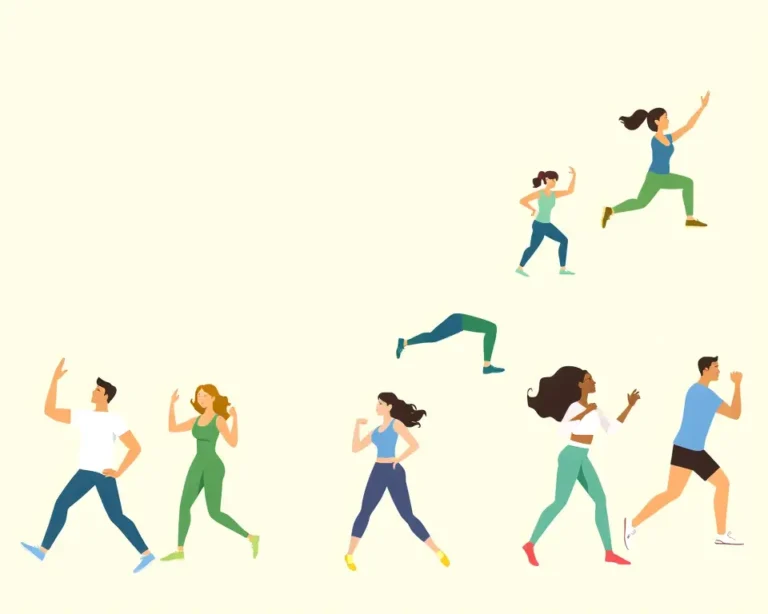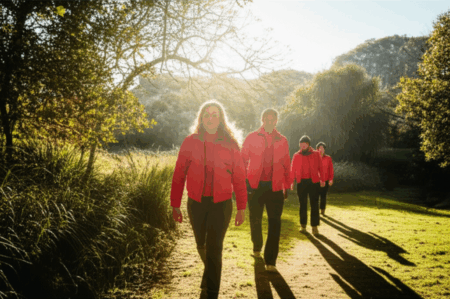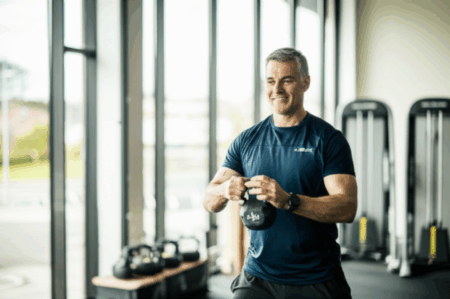Want to live a longer, healthier life? You don’t need to become a marathon runner or spend hours in the gym. Research shows that even a small amount of regular physical activity can significantly reduce your risk of early death and improve your overall well-being. This article provides an easy exercise routine incorporating cardio and strength training that you can easily weave into your daily life, along with insights into the science-backed benefits of movement for longevity.
The Power of Movement: How Exercise Extends Your Lifespan
It’s no secret that physical activity is essential for a healthy and fulfilling life. People who engage in regular exercise have a significantly lower risk of developing major illnesses and premature death. Exercise has been shown to reduce the risk of:
- Coronary heart disease and stroke
- Type 2 diabetes
- Certain cancers (bowel and breast)
- Osteoarthritis
- Hip fracture
- Falls (especially among older adults)
- Depression
- Dementia, including Alzheimer’s disease
According to the 2018 Physical Activity Guidelines for Americans, engaging in at least 150 minutes of moderate-intensity aerobic activity or 75 minutes of vigorous-intensity aerobic activity each week can cut your risk of early death by about a third. This level of activity has a “dramatic effect on longevity,” with benefits extending to reduced risk of heart disease, cancer, diabetes, and cognitive decline.
William Kraus, M.D., a professor of medicine at Duke University and a key contributor to the 2018 guidelines, emphasizes the profound impact of physical activity: “People live longer, they have less disease of all types.”
Small Changes, Big Impact: The “Anything is Better Than Nothing” Approach
If the idea of 150 minutes of weekly exercise seems daunting, don’t be discouraged. Even small amounts of physical activity can provide significant benefits. As Dr. Kraus notes, “It turns out that anything is better than nothing.” A study in Nature Medicine found that individuals aged 40 to 69 who engaged in brief spurts of movement (one to two minutes) experienced a longevity boost.
- 11 Minutes a Day: Research indicates that just 11 minutes of moderate-to-vigorous activity daily can significantly lengthen lifespan, especially for those who spend most of their day sitting.
- Walking: A Harvard-led study revealed that women in their 70s who averaged at least 4,400 steps a day lived significantly longer than those who averaged 2,700 steps. Some research indicates that individuals may gain as much as two hours of life expectancy for every hour they spend walking.
- Short Bursts of Activity: A study using wearable fitness trackers found that as little as three to four minutes of short, vigorous activity bursts throughout the day were associated with a substantially lower risk of premature death from all causes.
Moderate vs. Vigorous Activity: Finding Your Sweet Spot
The intensity of your exercise also plays a role in its longevity benefits.
- Moderate-Intensity Activity: Activities like brisk walking, cycling, swimming, and mowing the lawn noticeably increase your heart and breathing rate. You should be able to talk but not sing during moderate exercise.
- Vigorous-Intensity Activity: Activities like running, swimming laps, heavy yard work, and aerobic dancing make you breathe hard and fast, with a significant increase in heart rate.
Research suggests that both moderate and vigorous activity contribute to longevity, with the optimal balance potentially varying among individuals. Studies show that engaging in moderate to vigorous aerobic exercise reduces the risk of dying by 24% to 34%. A recent study suggests that combining moderate and intense cardio, supplemented by weight training, can reduce the risk of early death by up to 50%.
Building Your Easy Exercise Routine: A Step-by-Step Guide
Here’s an easy exercise routine to help reduce the risk of early death:
1. Warm-up (3 minutes)
Warming up prepares your muscles and joints for movement, reducing the risk of injury and improving exercise efficiency.
- March in place (1 minute): Lift your knees high and swing your arms.
- Arm circles (30 seconds): Rotate your arms forward and backward.
- Leg swings (30 seconds per leg): Swing your leg forward and back to loosen your hip joints.
- Jumping jacks (1 minute): Get your heart rate up!
2. Cardio Blast (3 minutes)
Short bursts of high-intensity cardio are linked to longevity, strengthening your heart and improving lung function.
- Jump rope (1 minute): If you don’t have a rope, mimic the motion.
- High knees (1 minute): Run in place, lifting your knees to your chest.
- Burpees (1 minute): Squat, jump back into a plank, do a push-up, and jump up.
3. Strength Training (5 minutes)
Strength training is crucial for maintaining muscle mass, bone density, and overall function as you age. It can also improve balance and reduce the risk of falls.
- Bodyweight squats (2 minutes): Stand with feet shoulder-width apart. Lower yourself as if sitting in a chair, keeping your knees behind your toes. Push through your heels to stand back up. Aim for 2 sets of 12–15 repetitions.
- Push-ups (2 minutes): Perform push-ups against a wall, on your knees, or in a standard plank position, depending on your fitness level. Aim for 2 sets of as many repetitions as possible.
- Plank (1 minute): Hold a plank position, engaging your core muscles. Aim for 30-60 seconds.
4. Cool-down (2 minutes)
A proper cool-down helps lower your heart rate and prevents muscle stiffness.
- Toe touch stretch (30 seconds): Reach for your toes while keeping your knees straight.
- Quadriceps stretch (30 seconds per leg): Hold your ankle behind you to stretch your thigh.
- Shoulder stretch (30 seconds per arm): Pull your arm across your body and hold.
Tailoring the Routine: Considerations for All Ages and Fitness Levels
The workout described above can be modified to fit most fitness levels.
- Beginners: Start slowly and gradually increase the duration and intensity of your workouts. Modify exercises as needed (e.g., wall push-ups instead of standard push-ups).
- Older Adults: Focus on exercises that improve balance and mobility, such as squats and leg swings. Consider chair-based exercises if needed.
- Advanced Exercisers: Increase the intensity and duration of the cardio bursts. Add weights or resistance bands to the strength training exercises.
The Optimal Weekly Exercise Plan for Longevity
While even small amounts of exercise are beneficial, research suggests the following weekly plan for optimal longevity:
- Moderate-Intensity Aerobic Exercise: 1 hour and 15 minutes (e.g., brisk walking)
- Vigorous-Intensity Aerobic Exercise: 2 hours and 30 minutes (e.g., running, swimming)
- Strength Training: At least two sessions per week, working all major muscle groups
Additional Tips for Incorporating Exercise into Your Daily Life
- Walk More: Take the stairs instead of the elevator, walk during your lunch break, and park further away from your destination.
- Find Activities You Enjoy: Choose activities that you find fun and engaging, making it more likely that you’ll stick with them long-term. Interactive sports like tennis, badminton, and soccer can be especially beneficial due to the social interaction they provide.
- Break Up Sedentary Time: Stand up and move around every 30 minutes to combat the negative effects of prolonged sitting.
- Make it a Habit: Schedule your workouts like any other important appointment and find an exercise buddy to stay motivated.
- Consult with a Healthcare Professional: If you have any underlying health conditions, talk to your doctor before starting a new exercise program.
The Science Behind Exercise and Longevity
Exercise promotes longevity through various mechanisms:
- Cardiovascular Health: Aerobic exercise strengthens the heart and improves blood vessel function, reducing the risk of heart disease, stroke, and high blood pressure.
- Metabolic Health: Exercise helps regulate blood sugar levels, reduce the risk of type 2 diabetes and metabolic syndrome, and maintain a healthy weight.
- Brain Health: Physical activity improves cognitive function, memory, and processing speed, and reduces the risk of dementia and Alzheimer’s disease.
- Mental Health: Exercise boosts self-esteem, mood, sleep quality, and energy levels, and reduces the risk of stress, depression, and anxiety.
- Musculoskeletal Health: Strength training maintains muscle mass and bone density, improving strength, balance, and mobility, and reducing the risk of falls and fractures.
- Telomere Length: Strength training may slow down biological aging by maintaining the length of telomeres, protective DNA caps at the ends of chromosomes.
Embrace Movement, Extend Your Life
Incorporating even a small amount of regular exercise into your daily routine can have a profound impact on your health and longevity. By following the easy exercise routine outlined in this article and making small changes to your lifestyle, you can take control of your health and enjoy a longer, more fulfilling life. Remember, every step counts, and any activity is better than none.







